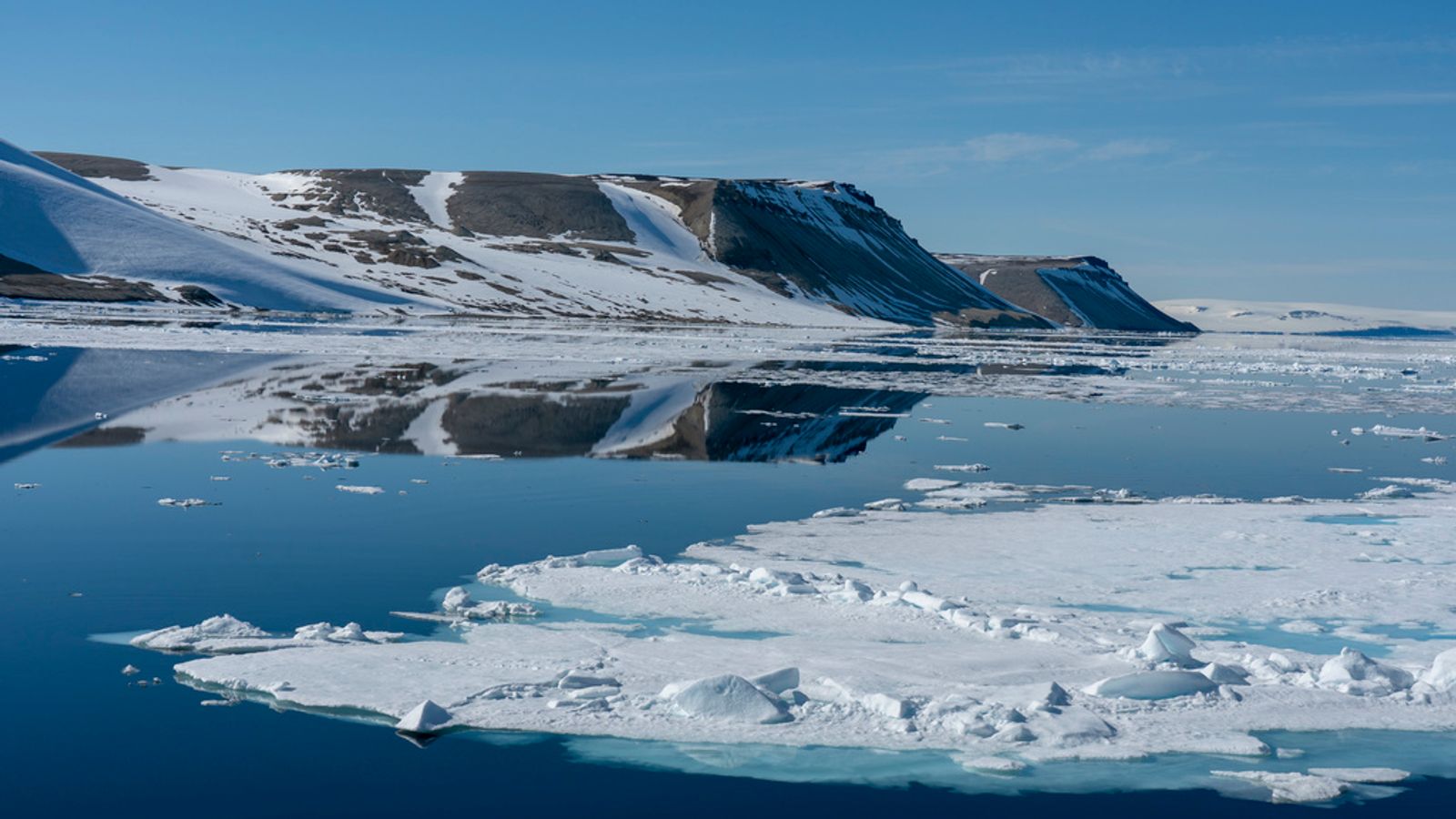The previous decade was the hottest on record, with polar and mountain ice melting faster than in the 20th century, according to the UN’s weather agency.
Between 2011 and 2020, the average global temperature was 1.1C above pre-industrial levels, according to new analysis by the World Meteorological Organisation (WMO).
Scientists have warned that permanent global warming of 1.5C above pre-industrial levels risks unleashing severe climate change effects on people, wildlife and ecosystems.
Glaciers have thinned by an “unprecedented” one metre per year, according to the WMO’s analysis.
The Antarctic continental ice sheet also lost nearly 75% more ice between 2011-2020 than it did between 2001-2010, the UN group said.
“We are losing the race to save our melting glaciers and ice sheets,” said professor Petteri Taalas, the secretary-general of the WMO.
The fresh climate warning comes after the WMO – which is made up of 193 countries and territories – predicted that 2023 would be the hottest on record.
The European Union’s Copernicus Climate Change Service (C3S) has also predicted the same thing.
According to the WMO, global warming for this year is expected to reach 1.4C above pre-industrial levels.
Signatories of the 2015 Paris Agreement committed to limiting global average temperature rise to well below 2C above pre-industrial levels by the end of the century.
World leaders and experts are currently meeting in Dubai for COP28, where they are discussing how to keep global warming under these targets.
‘Rate of sea level rise has nearly doubled’
According to the WMO’s analysis, the six hottest years taken together on record were between 2015 and 2020 – with 2016 and 2020 being the hottest years of the decade.
More countries also reported record-high temperatures than in any other decade.
The WMO’s report also warned of the loss of the Greenland and Antarctic continental ice sheets – the largest freshwater reservoirs on Earth.
The Antarctic continental ice sheet lost ice at an average rate of 143 Gigatonnes (Gt) per year during this decade, with more than three-quarters of this mass loss coming from West Antarctica.
Click to subscribe to ClimateCast with Tom Heap wherever you get your podcasts
Compared to the previous decade, this represents an increase of nearly 75% in ice losses.
Greenland lost mass at an average rate of 251 Gigatonnes (Gt) per year and reached a new record mass loss of 444 Gt in 2019.
For the Greenland and Antarctic ice sheets combined, there was an increase of 38% in ice losses compared to 2001-2010.
According to the WMO, the figure confirms the sustained increase in losses compared to the 1990s (1992-2000), when Greenland and Antarctica ice sheet losses amounted to 143 Gigatonnes (Gt) per year.
Melting of the Greenland ice sheet caused the sea level to rise at an annual rate of 4.5mm a year in the last decade, compared to 2.9mm a year between 2001-2010, according to the WMO.
The group also said nearly all the 19 primary glacier regions had witnessed increasingly large negative values from 2000 to 2020, with glaciers in Papua, Indonesia likely to disappear altogether within the next decade.
Read more from Sky News:
‘Unprecedented’ 2,400 fuel lobbyists at COP28
Climate summit not yet ‘focusing on the cause’
Professor Taalas said: “Each decade since the 1990s has been warmer than the previous one, and we see no immediate sign of this trend reversing.
“More countries reported record high temperatures than in any other decade.
“Our ocean is warming faster and faster, and the rate of sea level rise has nearly doubled in less than a generation.”
Prof Taalas added: “We have to cut greenhouse gas emissions as a top and overriding priority for the planet in order to prevent climate change spiralling out of control.”
Be the first to get Breaking News
Install the Sky News app for free
According to the WMO, the Arctic is heating faster than any other region on Earth because solar energy is absorbed by dark oceans instead of being reflected back into space off white sea ice – a process known as the Albedo effect.
One piece of good news is that the hole in the ozone layer above the Antarctic has shrunk compared to the previous two decades.
The WMO also said early warning systems for disasters have improved, resulting in fewer people injured and killed.









